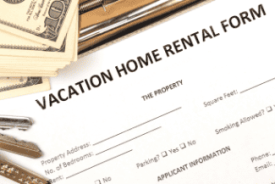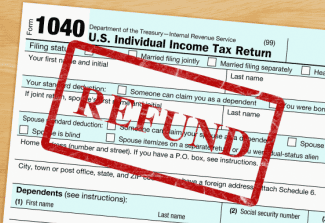Demystifying the Reverse Exchange
by Ken Tharp, Iowa Equity Exchange
As a Qualified Intermediary, Iowa Equity Exchange has the very specific role of guiding the investor through a §1031 exchange. We inform the investor of exchange requirements, produce the necessary exchange documents, provide the critical time monitoring procedures required, and manage the investor’s funds while in our possession.
 Reverse exchanges are gaining in popularity, but they are often misunderstood and they can be confusing. Let’s investigate the basics of this exchange structure.
Reverse exchanges are gaining in popularity, but they are often misunderstood and they can be confusing. Let’s investigate the basics of this exchange structure.
Sometimes a situation arises in which an investor or property owner wants to purchase a property but wishes to sell a property that he or she already owns to provide the funds needed to purchase the new property. If the old property sells prior to closing on the new property, the investor can employ a standard Section 1031 exchange to defer capital gain taxes on the sale.
But what if the investor needs to close on the new property before the old one can close, or perhaps before it is even on the market?
In those situations, a reverse exchange can provide the investor the alternative he or she needs to still take advantage of the tax deferral on the sale of the old property.
How does it work? Let’s boil it down to the essentials. In a standard exchange, there are four parties involved:
- The exchanger (you)
- The intermediary (us)
- The buyer of the relinquished (old) property
- The seller of the replacement (new) property.
 A reverse exchange adds a fifth party – a single-purpose entity that is typically formed by the intermediary to hold title to the replacement property. This title-holding entity is known in exchange parlance as an Exchange Accommodation Titleholder, or EAT. Its sole purpose is to hold title to the new property, giving the exchanger time to sell the relinquished property.
A reverse exchange adds a fifth party – a single-purpose entity that is typically formed by the intermediary to hold title to the replacement property. This title-holding entity is known in exchange parlance as an Exchange Accommodation Titleholder, or EAT. Its sole purpose is to hold title to the new property, giving the exchanger time to sell the relinquished property.
As we go through the steps of a reverse exchange, you will see that the term itself is a bit of a misnomer. Nothing is actually done in reverse order. The establishing of the EAT to hold the new property merely postpones a standard exchange until the old property sells.
Once the EAT takes title to the new property, the investor has 180 days to sell and close the old property. When that happens, the intermediary can proceed with a standard exchange that transfer title from the EAT to the exchanger. The risk to the exchanger is that the old property does not sell within the 180 days. If that happens, the exchanger essentially has two choices – either take title to the new property and treat the old property however he wishes (that is, either continue to attempt to sell it outside of an exchange structure or simply continue ownership) or move forward with the reverse exchange outside of the 180-day safe harbor established by the IRS. The former could require some financial gymnastics, while the latter establishes a new set of risks, most of which are substantial. Bottom line, price your old property so that it will sell within the 180 day period so that you never have to make the choice between two poor alternatives.
It might have occurred to you by now that, with the money to purchase the new property wrapped up in the old property, the EAT must be a really great guy to buy the new property for you and hold it until you can sell the old one. While it may be true that the EAT is a really great guy, he will not use his own money to purchase the new property for you. The funds to purchase the new property must be provided by the exchanger.
There are essentially two means by which the exchanger can provide those funds: 1) he can provide cash from his back pocket or a handy bank account, or 2) he can work with his bank and the EAT to structure a loan for the new property. The EAT will not want to assume any liability for the loan on the new property, so the bank will generally need additional collateral. While it can be cumbersome to structure such a loan, it can usually be accomplished and the exchange can proceed.
There are two other important documents that are typically part of a reverse exchange. Usually the exchanger and the EAT execute a note that shows the funds that were provided by the exchanger and essentially loaned to the EAT to purchase the property. This assures the exchanger that the EAT will pay back those funds when the closing occurs and can be secured by the new property. The note generally does not carry any interest and is for the same amount as the purchase price of the new property.
The second document is a net lease between the EAT and the exchanger. The net lease makes the exchanger responsible for payment of all expenses of the new property, just the same as if he or she owned it.
The lease payments, if any, can be equal to any payments that are due to the bank involved. The lease is designed to be strictly a pass-through, allowing the EAT to cover any expenses that the exchanger cannot pay directly, and allowing the exchanger to operate the property as if he or she owned it.
Now let’s address the question of WHY. Why would anyone go through all of this? There are many situations that might warrant consideration of a reverse exchange. For instance, we have structured reverse exchanges for land owners who purchased property at an auction and needed to close within a short time frame. In another case, an investor came across a deal that he did not want to miss, but the seller was not willing to wait for the investor’s old property to sell.
In yet another situation, the sale of the investor’s old property fell apart at the last minute and he stood to lose the new property if he did not close on it. One last scenario involves peace of mind – investors sometimes take their time finding just the right deal. When that deal is found, they ask us to structure a reverse exchange and they might put several properties on the market for sale, any one of which could function as their relinquished property should it sell. For some folks, it’s actually an easier way to execute an exchange than the typical forward exchange because it avoids having to deal with identifying potential replacement properties within the 45-day window that Section 1031 allows.
There are other ways to structure a reverse exchange. This article is not intended to be comprehensive, but to provide a simplified overview for a basic understanding of the reverse exchange process. Reverse exchanges are most expensive for the investor than a standard exchange, primarily due to the additional expense that the intermediary must incur to establish the single-purpose entity, the tax-reporting requirements for that entity, and so forth. Reverse exchange fees can be several times that of fees for a standard exchange.
To conclude, reverse exchanges are an exchange structure that is increasingly popular. In the right situations, reverse exchanges can be extremely advantageous. Should you have any questions about reverse exchanges, please feel free to contact us.
American Apartment Owners Association offers discounts on products and services related to your commercial housing investment including REAL ESTATE FORMS, tenant debt collection, tenant background checks, insurance and financing. Find out more at www.joinaaoa.org.
To subscribe to our blog, click here.















 Accessibility
Accessibility